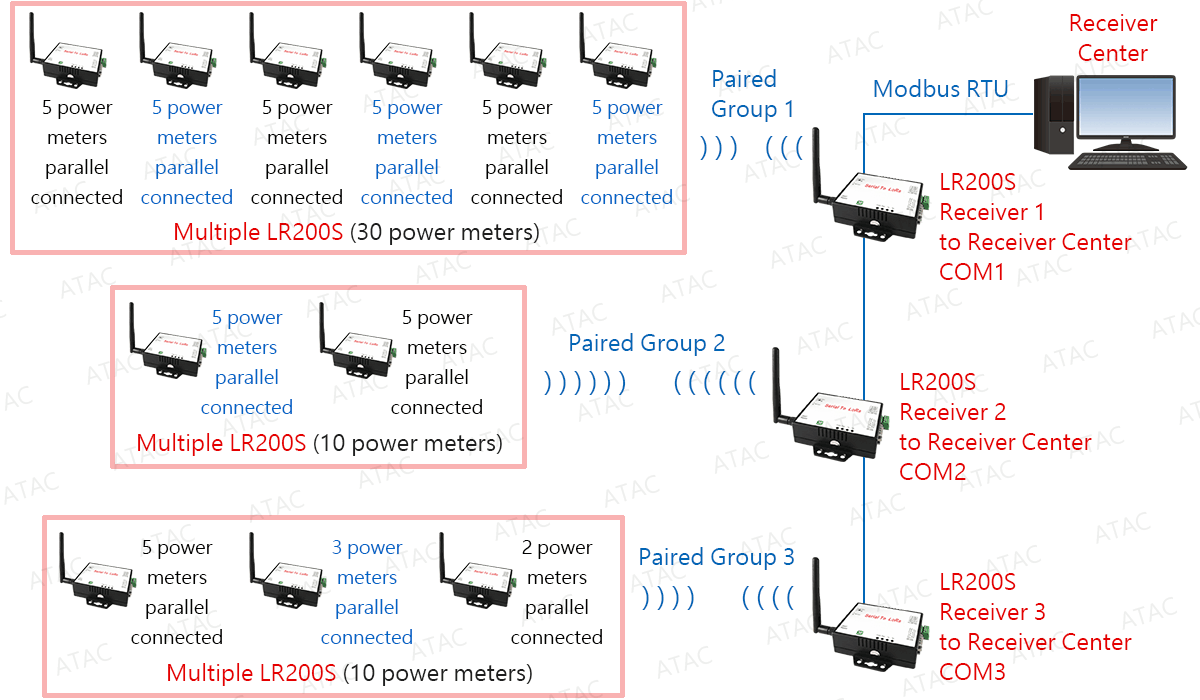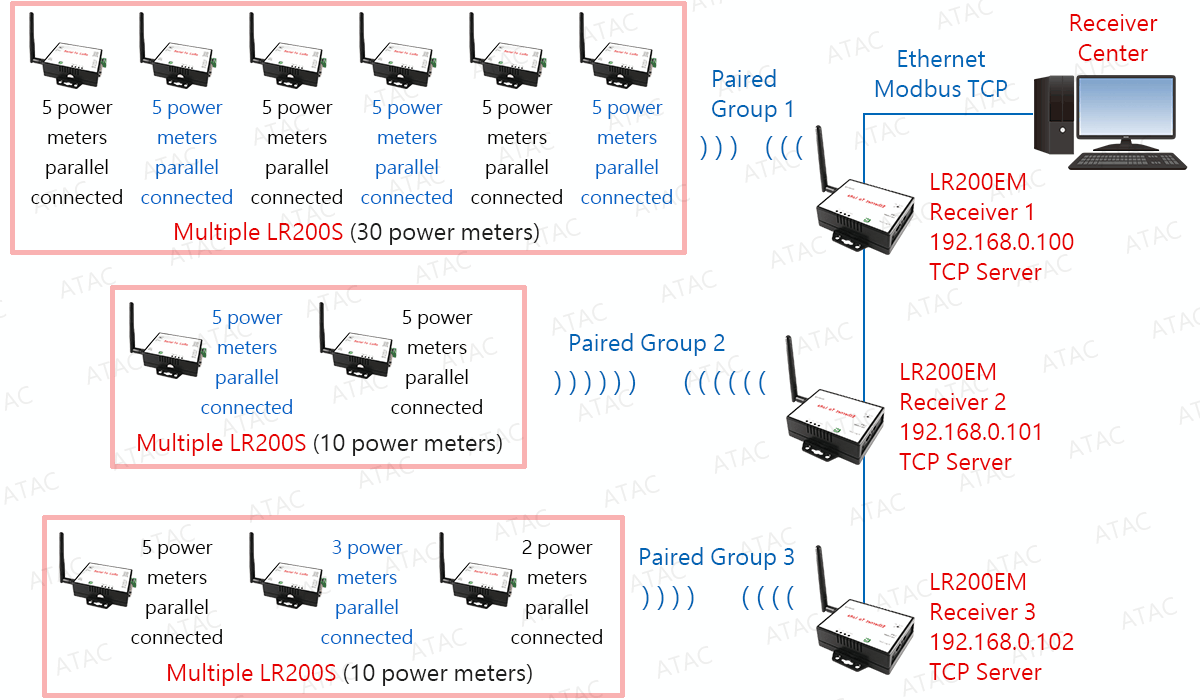LoRa is based on STAR which is similar to RS485 half-duplex.
Master broadcasts to multiple Slaves, the Slave with corresponding ID will reply to Master.
Theoretically 20 units of LR200 in one LoRa network are no problem.
10 units of LR200 or less in one LoRa network has better performance.
In actual practice in an open area up to 1km, it takes 3~5 seconds upon sending out the query till receiving the data for one register address data packet less than 100 bytes. Furthermore the receiver side also needs time to process the received data before being able to send out the next query. Therefore the more LR200 LoRa converters configured in a single LoRa network and the more instruments to poll data from, the much longer time it takes to process all.
Data transmission works well in the following actual operation:
One LR200 LoRa converter configured as a receiver (master) paired with other 6 LR200 LoRa converters (slave).
Each LR200 slave is parallel connected with 5 power meters.
So there is a total of 30 power meters’ data to poll in this single LoRa group.
Some power meters each with only one register address to poll.
Some power meters each with 2 or more register addresses to poll.
Each register address data packet size is less than 100 bytes.
Operate in an open area up to 1km.
There are many different operation environments and situations so actual testing in the actual operation environment is required to verify how many instruments can be processed and how many LR200 LoRa converters can be communicated in a single LoRa group.
Multiple LR200S each as a receiver (master) paired to multiple LR200S (slave)

Multiple LR200EM each as a receiver (master) paired to multiple LR200S (slave)
